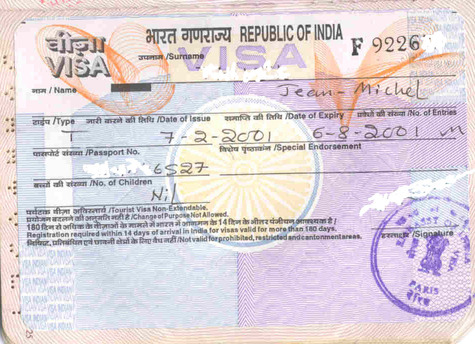


K-1 Fiancee Visa Definition
- The Immigration and Nationality Act provides a nonimmigrant visa classification "K-1" for aliens coming to the United States to marry American citizens and reside here.
K-1 Fiancee Visa PETITION
- To establish K-1 visa classification for an alien fiancée, an American citizen must file a petition, Form I-129F, Petition for Relative or Fiancée, with the United State Citizenship and Immigration Service (USCIS) having jurisdiction over the place of the petitioner's residence in the United States.
- Such petitions may not be adjudicated abroad.
- The approved petition will be forwarded by USCIS to the American consular office where the alien fiancée will apply for his or her visa.
- A petition is valid for a period of four months from the date of USCIS action, and may be revalidated by the consular officer.
- Applicants who have a communicable disease, or have a dangerous physical or mental disorder; are drug addicts; have committed serious criminal acts, including crimes involving moral turpitude, drug trafficking, and prostitution; are likely to become a public charge; have used fraud or other illegal means to enter the United States; or are ineligible for citizenship, must be refused a visa.
- The two-year foreign residency requirement for former exchange visitors is also applicable. If found to be ineligible, the consular officer will advise the applicant if the law provides for a waiver.
- Upon receipt of an approved petition, the American consular officer will notify the beneficiary and give him or her the necessary forms and instructions to apply for a "K" visa.
- Since a fiancée visa applicant is an intending immigrant, he or she must meet most of the same documentary requirements of an immigrant visa applicant.
- In addition to the prescribed application forms, the following documents are normally required:
- Valid passport
- Birth certificate
- Divorce or death certificate of any previous spouse
- Police certificate from all places lived since age 16
- Medical examination
- Evidence of support
- Evidence of valid relationship with the petitioner
- Photographs
- Both petitioner and beneficiary must be legally able and willing to conclude a valid marriage in the United States.
- The petitioner and beneficiary must have previously met in person within the past two years unless the Attorney General waives that requirement.
- As soon as the processing of a case is completed and the applicant has all necessary documents, a consular officer will interview the fiancée.
- If found eligible, a visa will be issued, valid for one entry during a period of six months.
- A non-refundable application fee is collected at posts which issue machine-readable visas.
- The marriage must take place within 90 days of admission into the United States.
- Following the marriage, the alien spouse must apply to the USCIS to establish a record of entry for conditional permanent residence status.
- After two years, the alien may apply to the USCIS for removal of the conditional status.
Family Members
- The unmarried, minor (under 21) children of a K-1 beneficiary derive "K-2" nonimmigrant visa status from the parent so long as the children are named in the petition.
- A separate petition is not required if the children accompany or follow the alien fiancée within one year from the date of issuance of the K-1visa.
- Thereafter, a separate immigrant visa (I-130) petition is required.
Terminology:
Fiancee - The term Fiancee will be used to include both male and female prospective spouses
USCIS - The United State Citizenship and Immigration Service
Petitioner - The U.S. citizen who files a petition with an USCIS office in the United States on behalf of a Fiancee asking that he or she be admitted to the United States for the purpose of marriage
Petition - USCIS form I-129(F) “Petition to Classify Status of Alien Fiancee or Fiancee for Issuance of Nonimmigrant Visa”
Beneficiary - The Fiancee named in the petition
K-1 Visa - The visa category for the Fiancee of a
U.S. citizen
K-2 Visa - The visa category for the minor children of a K-1 visa holder
Packet 3 - Information that the Embassy sends to your Fiancee, which specifies the documents that must be obtained and presented at the visa interview
Packet 4 - Information that the Embassy sends to your Fiancee setting an appointment date and explaining how to obtain the required medical examination
First Step -- Filing the Petition
To begin the K-1 process, you file a petition at the Immigration and Naturalization Service (USCIS) office having jurisdiction over your current or intended residence in the U.S.
There is a filing fee of $165 for the petition.
The children of your Fiancee must be listed in the petition even if they will not be traveling at this time.
USCIS sets the requirements for petition approval.
Petitions for K-1 visas cannot be filed or approved outside the United States.
You must present the following supporting documentation
with your petition:
- Evidence that you are an American citizen, such as your Birth Certificate or Naturalization Certificate.
- Proof of termination of any prior marriages of the petitioner and beneficiary, such as a divorce decree or death certificate.
- Evidence that you have met your Fiancee and evidence of your relationship, such as airline tickets, visa stamps, hotel receipts, and dated photos.
Any documents in a foreign language should be accompanied by an English translation.
This documentation confirms your identity and that of your future spouse and proves that both of you are legally free to marry.
You must prove have met your Fiancee face to face during the two years prior to the filing of the petition.
USCIS will notify you when they have approved the petition and will send it the State Department, who perform a background check, and then forward it to the U.S. Embassy for final processing.
It often takes four to 12 weeks for a petition to reach the Embassy from the USCIS (then the State Department), sometimes longer.
Second Step -- When Your Petition is Approved
USCIS will notify you when they have approved the petition and will send it the State Department, who perform a background check, and then forward it to the U.S. Embassy for final processing.
Each American Embassy may process the K-1 Visa process differently. Click here for a List of American Embassies.
Your petition is valid for four months, but can be extended by the Embassy if a visa cannot be issued during that period and the intention to marry still exists.
Third Step -- Processing the Provisional Case
For all cases the American Consulate must send a name check cable that requires a reply from the FBI.
When the embassy receives the file from the State Department, they send a Packet 3 to the beneficiary.
The Packet 3 tells the applicant what documents he or she must collect prior to the visa interview.
Packet 3 asks your Fiancee to assemble the following documents:
- Valid passports for the beneficiary and any dependent children.
- Birth certificates for the beneficiary and any dependent children.
- Proof of termination of any prior marriages.
- A police certificate from the current place of residence of the beneficiary, as well as from any place or places of residence for 6 months or more since attaining the age of 16.
- Police certificate(s) for any dependent children over 16
Any documents in a foreign language should be accompanied by an English translation.
When your Fiancee has collected all the documents specified in Packet three, he or she should notify the Embassy by returning the form in Packet 3 (Optional Form 169) certifying that all required documents have been obtained.
Fourth Step -- Scheduling an interview
The Embassy will send out Packet 4 explaining the process of obtaining medical exams and scheduling an appointment for a visa interview when we have received
the following items:
- The actual approved petition from USCIS
- Clearances from the required name checks
- A signed OF-169 from the beneficiary
- The Embassy will usually accept a faxed copy of OF-169.
The Embassy will consider requests for interview scheduling on the basis of official telegraphic notification from USCIS of petition approval on a case- by-case basis.
In cases where the request is granted, the Embassy may request additional information from you regarding your marital history and the history of your relationship with your Fiancee.
Packet 4 contains an appointment date and instructions on where to go to complete the medical examination.
The medical exams must be performed by one of the physicians identified in Packet 4.
Applicants should bring their vaccination records to the medical exam and may be asked to have additional vaccinations at that time.
In addition to mailing Packet 4, we will, upon request, notify by fax attorneys of record or interested petitioners not represented by an attorney that Packet 4 has been sent and an appointment date has been set.
This request should be included in the original fax sent to the Embassy asking us to open a provisional case.
Fifth Step -- The Visa Interview
On the date of the appointment your Fiancee should come to the Immigrant Visa section of the Embassy.
Minor children under 14 do not need to attend the interview.
Your Fiancee will need to fill out a Nonimmigrant Visa Application (OF-156) in duplicate, as well as a supplement to form DS-156 required in K visa cases.
Each dependent child will also need Nonimmigrant Visa Applications in duplicate. Original documents, not copies, should be brought to the interview.
Originals of primary documents, such as birth, marriage, and death records, will be returned to the applicant after the interview.
Your Fiancee will be asked to present:
- Valid passports for the beneficiary and any dependent children
- Birth certificates for the beneficiary and any dependent children
- Proof of termination of any prior marriages of both petitioner and beneficiary
- Police certificate(s) for the beneficiary and any dependent children over 16 years of age
- Vaccination results for the beneficiary and any dependent children
- Medical exam results for the beneficiary and any dependent children
- Proof of adequate financial support once in the United States to ensure that your Fiancee and dependent children will not become public charges.
- Supporting documentation verifying the relationship between the petitioner and beneficiary
Documentation regarding financial support can be in any form so long as it contains enough detail and information for the consular officer to conclude that the beneficiary will not become a public charge.
After a consular officer has reviewed the case, your Fiancee will be interviewed.
The consular officer will ask your Fiancee questions about your relationship, such as how you met and when you decided to marry.
The consular officer is required by law to verify that your relationship with your Fiancee is real and that you do intend to marry within 90 days of your Fiancee’s arrival in the United States.
Your Fiancee will be required to sign a statement regarding his or her legal capacity to marry and intention to marry.
Provided everything is in order at the time of the interview, your Fiancee will receive a visa the same day.
Your Fiancee and each dependent child will pay a non- refundable machine-readable-visa fee on the day of the interview.
Supporting documentation, including the K petition, birth certificate, Nonimmigrant Visa Application, and medical exam will be placed in a sealed envelope and given to the applicant for presentation to USCIS at the port of entry.
Copyright © 2007 by American Immigration Network, all rights reserved.
http://www.usavisanow.com/



























































